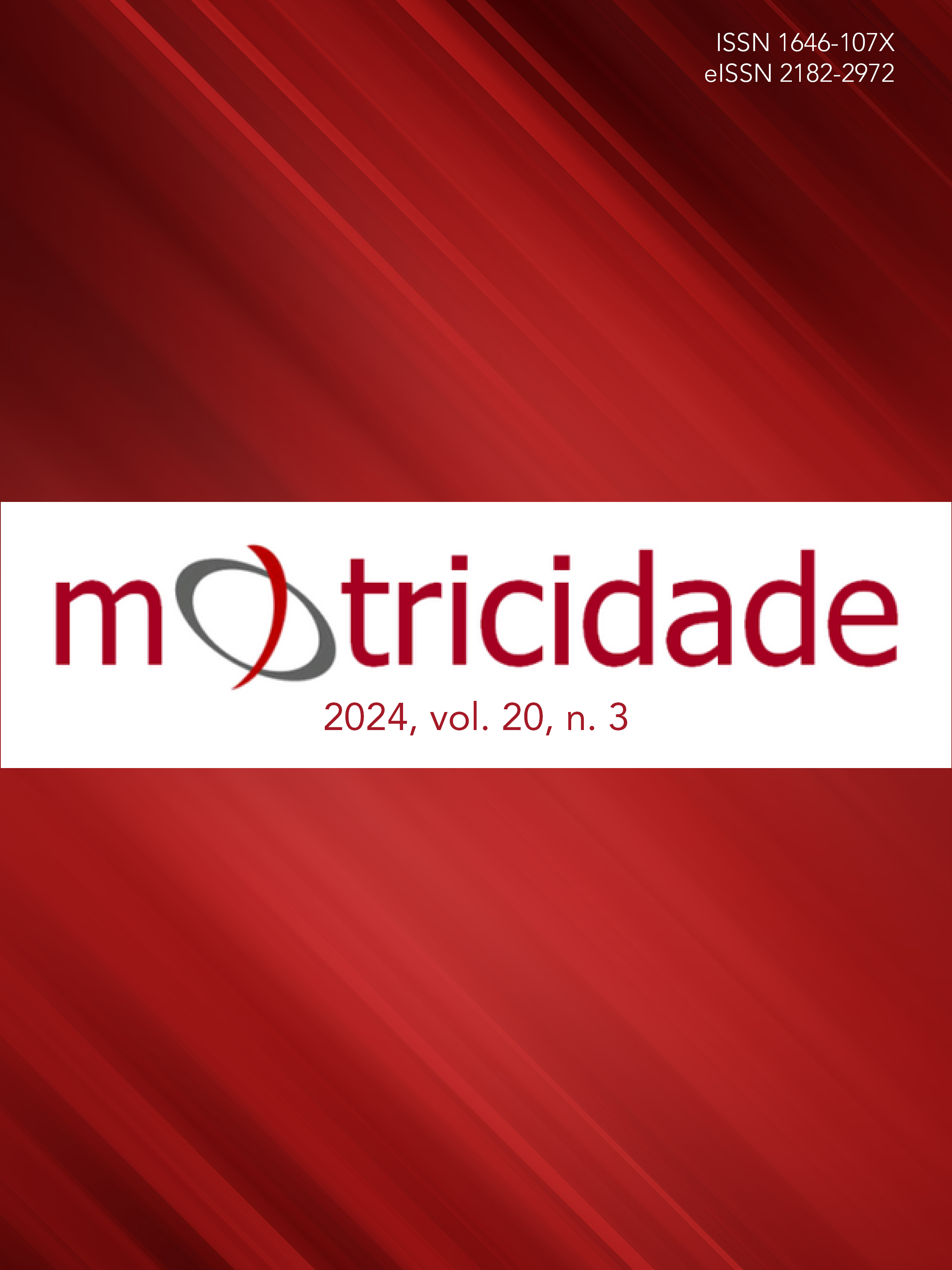Effects of 12 weeks of paracanoe training on length, frequency and stroke rate in beginner athletes.
DOI:
https://doi.org/10.6063/motricidade.32752Keywords:
Physical-motor disability, Canoeing, Performance variables, Sports for People with DisabilitiesAbstract
The present research aimed to analyse the effects of 12 weeks of paracanoe training on stroke length, stroke frequency, and stroke index. It is characterised by quantitative research and quasi-experimental design. The sample comprised 5 paracanoe athletes, aged between 28 and 43, of both sexes and living in the backlands of Pernambuco. Data collection was carried out in an artificial lake located in the city of Petrolina – PE, which occurred in two moments, pre and post-test, using a kayak (K1 paracanoagem) and rowing (Epic® and Jantex®) with an action camera (GoPro 7 Hero Black®) attached to the bow of the vessel. Subsequently, a telemetry program (Telemetry Overlay®) was used to extract data from the action video camera, and Kinovea® was used to analyze the video data. The variables of time (d=0.68), stroke length (d=0.51), stroke frequency (d=0.52) and stroke index (d=0.58) showed a moderate effect size when compared in the pre and post-test. The present study demonstrated that 12 weeks of training had a greater effect on performance in relation to the variables of paddling rate and race time in paracanoe with a 200-meter route.
Downloads
Published
Issue
Section
License
The authors of submitted manuscripts must transfer the full copyright to Journal Motricidade / Sílabas Didáticas Editions. Granting copyright permission allows the publication and dissemination of the article in printed or electronic formats, and copyrights start at the moment the manuscript is accepted for publication. It also allows Journal Motricidade to use and commercialise the article in terms of licensing, lending or selling its content to indexation/abstracts databases and other entities.
According to the terms of the Creative Commons licence, authors may reproduce a reasonable number of copies for personal or professional purposes, but without any economic gain. SHERPA/RoMEO allows authors to post a final digital copy (post-printing version) of the article on their websites or on their institutions' scientific repository.


